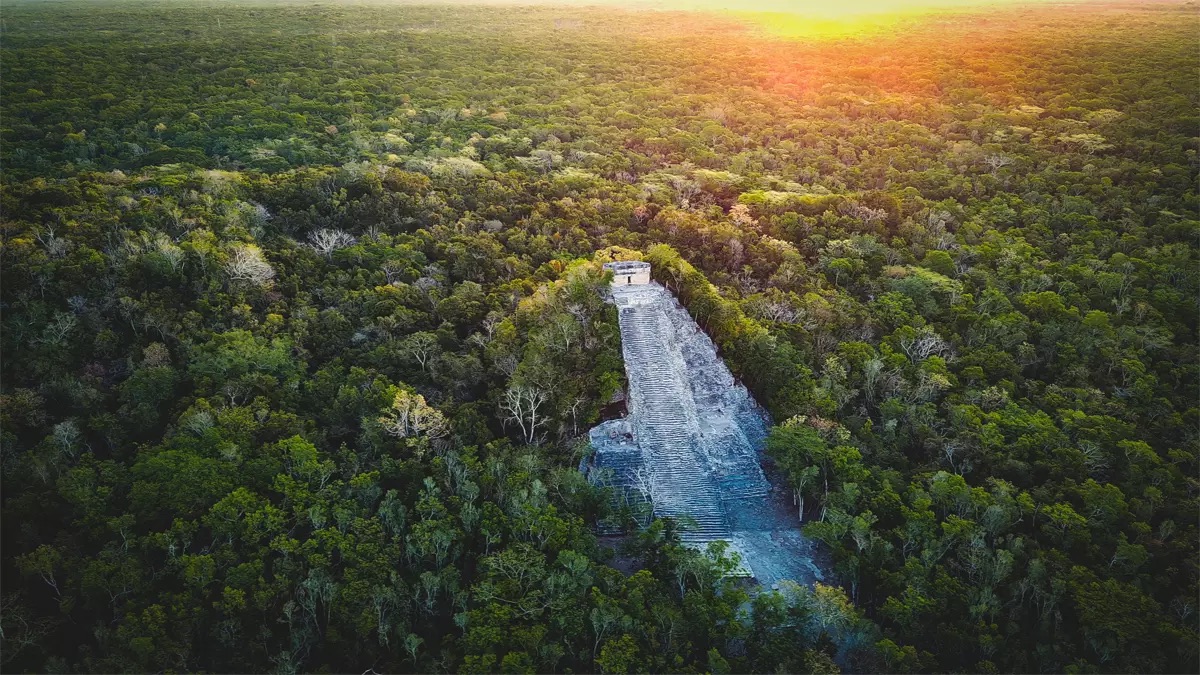Unravel the Mysteries of Ziggurats: Ancient Monuments that Define the Mesopotamian Landscape
The ancient ziggurats of Mesopotamia remain an architectural marvel, attracting historians and archaeologists worldwide. These monumental structures have long intrigued researchers, who continue to study their significance within the cradle of civilization. In this article, we will uncover 10 fascinating facts about these ancient wonders, revealing their purpose, construction, and cultural impact.
- Origins of the Ziggurats
The term “ziggurat” is derived from the ancient Akkadian word “ziqqurratu,” which means “to build on a raised area, or height and raised.” These stepped pyramidal structures were primarily constructed in ancient Mesopotamia, which encompasses modern-day Iraq, Syria, and parts of Iran and Turkey. Ziggurats date back to the 3rd millennium BCE, with the oldest known example being the White Temple at Uruk, built around 3200 BCE.
- Religious Significance
Ziggurats served as religious centers, with each dedicated to a particular deity. They were believed to be the dwelling places of the gods, and their towering height was symbolic of the connection between heaven and earth. The priests who managed the ziggurats conducted rituals, offerings, and ceremonies to appease the gods and maintain their divine favor.
- Architectural Design
While the design of ziggurats varied, most shared common architectural features. These included a stepped pyramidal shape, with multiple levels or terraces, and a temple at the summit. Constructed from mud-brick and faced with baked bricks, the ziggurats were often adorned with intricate designs and inscriptions. Some also featured a series of ramps or stairways, allowing access to the various levels.
- The Great Ziggurat of Ur
One of the most famous ziggurats is the Great Ziggurat of Ur, built during the reign of King Ur-Nammu in the 21st century BCE. This enormous structure, dedicated to the moon god Nanna, stood at approximately 100 feet (30 meters) in height and covered an area of 210 by 150 feet (64 by 46 meters). Excavations at the site have revealed a complex network of rooms, courtyards, and temples, highlighting its significance as a religious center.
- The Tower of Babel Connection
Many scholars believe that the biblical story of the Tower of Babel was inspired by the ziggurats of Mesopotamia. According to the Book of Genesis, the people of Babylon attempted to build a tower reaching the heavens, but God confounded their language and scattered them across the earth. The story may have been a cautionary tale about the hubris of humanity, warning against the construction of such monumental structures.
- Construction Techniques
The ziggurats were built using a technique known as “massive mud brick construction,” wherein sun-dried mud bricks were used as the primary building material. These bricks were held together with bitumen, a naturally occurring asphalt, or clay mortar. The outer facade was often covered with kiln-fired bricks, which provided additional strength and protection from the elements.
- Astronomical Alignments
Some ziggurats were designed with astronomical alignments in mind, reflecting the importance of celestial observation in ancient Mesopotamian culture. The ziggurats’ orientation and layout often corresponded with the rising and setting of particular stars or constellations, allowing the priests to monitor celestial events and predict the future.
- Preservation and Restoration
Many ziggurats have been lost to time due to natural disasters, erosion, and human intervention. However, some have been preserved or restored in recent years, allowing visitors to experience these ancient marvels firsthand. The Great Ziggurat of Ur, for example, underwent extensive restoration in the 1980s, with the support of the Iraqi government and international experts. These efforts have helped to safeguard these invaluable historical sites for future generations.
- Ziggurats in Other Cultures
While ziggurats are most closely associated with ancient Mesopotamia, similar structures have been found in other parts of the world. In Mesoamerica, the Maya and Aztecs built stepped pyramids with temples on top, serving religious and ceremonial purposes. Additionally, the ancient city of Teotihuacan in modern-day Mexico features the Pyramid of the Sun and the Pyramid of the Moon, which bear striking resemblances to ziggurats.
- Legacy and Influence
The ziggurats of Mesopotamia have had a lasting impact on architecture, art, and culture throughout history. They influenced the construction of pyramids in Egypt and Mesoamerica and inspired later architectural styles such as the stepped design of the Mayan temples. Today, ziggurats continue to captivate the imagination, symbolizing the ingenuity and grandeur of ancient civilizations.
The ancient ziggurats of Mesopotamia offer a glimpse into the religious, cultural, and architectural achievements of the people who inhabited this region thousands of years ago. As we continue to explore and study these magnificent structures, we gain a deeper understanding of the lives and beliefs of the civilizations that built them. With their impressive design, astronomical alignments, and global influence, ziggurats remain a testament to the power and majesty of ancient Mesopotamia.
📚📖 Make sure to join Ancient Library on Telegram, and become part of a unique group 👉🏻 https://t.me/theancientlibrary
If you want to help us out and support the page, you can buy us a coffee ( we really appreciate it) 👉🏻 https://www.buymeacoffee.com/ancientlibrary
I am the Librarian, and I, together with the guardians of the Ancient Library, curate content for this site. Welcome, and enjoy your stay.



